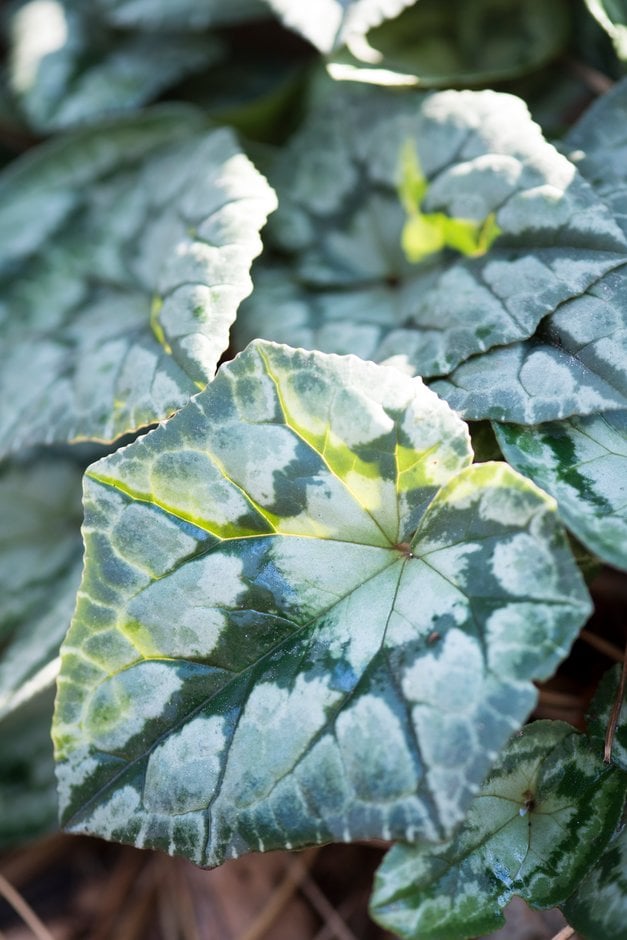Cyclamen hederifolium
ivy-leaved cyclamen
A perennial to 12cm, with somewhat ivy-shaped leaves patterned with silvery-green, and pink, sometimes fragrant, flowers 2.5cm in width, darker around the mouth, opening before or with the leaves
Size
Ultimate height
Up to 10cmTime to ultimate height
5–10 yearsUltimate spread
0.1–0.5 metresGrowing conditions
Moisture
Well–drainedpH
Acid, Alkaline, NeutralColour & scent
| Stem | Flower | Foliage | Fruit | |
| Spring | ||||
|---|---|---|---|---|
| Summer | ||||
| Autumn | Pink | |||
| Winter |
Position
- Partial shade
Aspect
North–facing or East–facing or South–facing or West–facing
Exposure
Sheltered Hardiness
H5Botanical details
- Family
- Primulaceae
- Native to GB / Ireland
- No
- Foliage
- Deciduous
- Habit
- Tufted
- Potentially harmful
- Ornamental bulbs, not to be eaten. Wear gloves and other protective equipment when handling Pets: Ornamental bulbs, not to be eaten - see the HTA guide to potentially harmful plants for further information and useful contact numbers
- Genus
Cyclamen are tuberous perennials with rounded, sometimes angular, leaves which are often attractively mottled. The nodding, characteristically shaped flowers have 5 reflexed and twisted petals, often with dark markings at the base
- Name status
Correct
- Plant range
- S Europe to Turkey
How to grow
Cultivation
Plant 5cm deep in moderately fertile, humus-rich, well-drained soil. Avoid excessive summer moisture and mulch well when leaves wither. See hardy cyclamen cultivation for further advice
Propagation
Propagate by seed, sown in darkness as soon as ripe. Can be beneficial to soak seed for 10 hours prior to sowing
Suggested planting locations and garden types
- Patio and container plants
- Rock garden
- Underplanting of roses and shrubs
Pruning
No pruning required
Pests
May be susceptible to mice, squirrels and vine weevil
Diseases
May be susceptible to cyclamen grey mould, particularly when grown under glass
Get involved
The Royal Horticultural Society is the UK’s leading gardening charity. We aim to enrich everyone’s life through plants, and make the UK a greener and more beautiful place.
